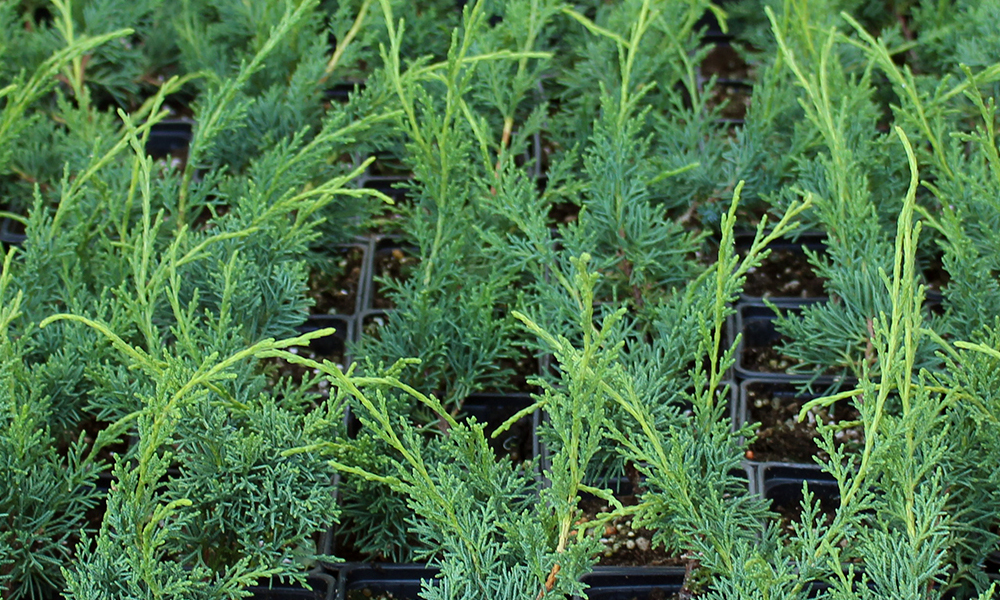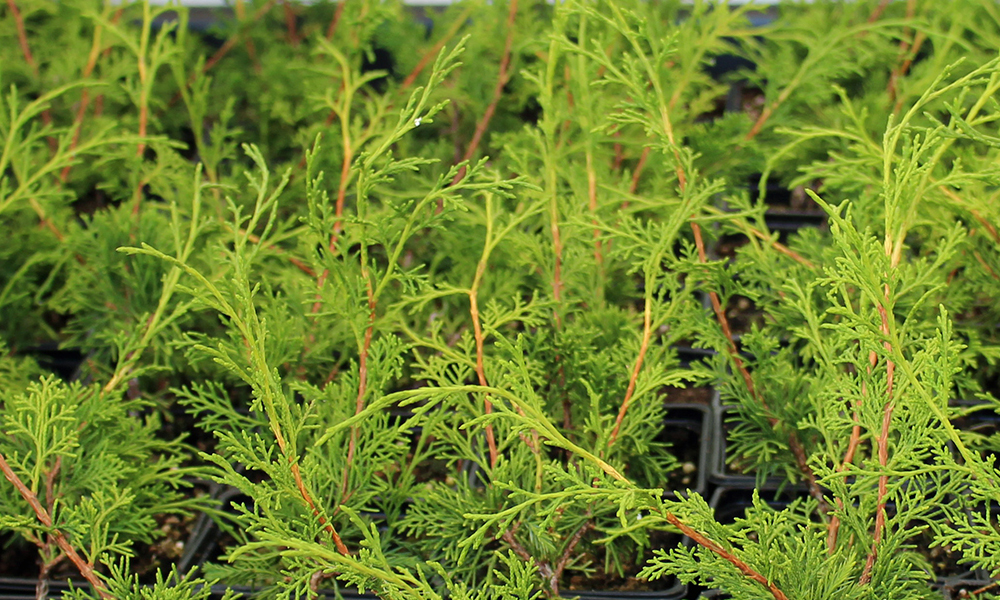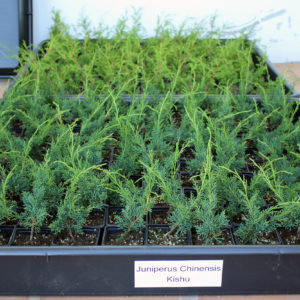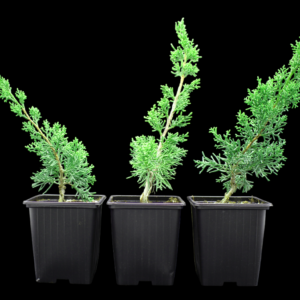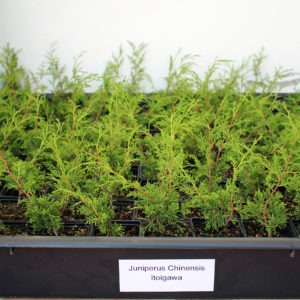Whats the difference between juniperus chinensis itoigawa and juniperus chinensis kishu?
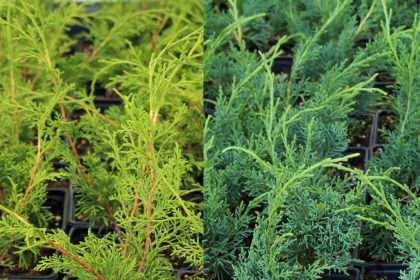
Juniperus chinensis ‘Itoigawa’ and Juniperus chinensis ‘Kishu’ are both cultivars of the Chinese juniper species (Juniperus chinensis) and are popular choices in bonsai cultivation. While they belong to the same species, there are some differences between them:
Origin:
- Juniperus chinensis ‘Itoigawa’: This cultivar originates from the Itoigawa region of Japan. It is highly prized for its compact growth habit and fine foliage.
- Juniperus chinensis ‘Kishu’: This cultivar is from the Kishu region of Japan. It is also valued for its small size and dense foliage.
Foliage:
- Juniperus chinensis ‘Itoigawa’: ‘Itoigawa’ typically has softer, finer foliage compared to ‘Kishu’. The foliage often appears in clusters and has a more delicate texture.
- Juniperus chinensis ‘Kishu’: ‘Kishu’ tends to have slightly coarser foliage compared to ‘Itoigawa’. The foliage may not be as fine but still retains an attractive appearance.
Growth Habit:
- Both cultivars exhibit a compact growth habit suitable for bonsai cultivation. However, ‘Itoigawa’ is often considered to have a more refined and compact growth habit compared to ‘Kishu’.
Color:
- The foliage color of ‘Kishu’ is a little darker than that of ‘Itoigawa’.
Bonsai Suitability:
- Both ‘Itoigawa’ and ‘Kishu’ are highly valued for bonsai cultivation due to their small size, dense foliage, and attractive growth habits. They respond well to pruning and shaping techniques typical in bonsai cultivation.
Availability:
- Availability may vary depending on location and nursery stock, but both cultivars are commonly available in bonsai nurseries and garden centers that specialize in bonsai materials.
Hardiness:
- Both ‘Itoigawa’ and ‘Kishu’ are generally hardy and adaptable to a range of growing conditions. However, their specific hardiness may vary depending on factors such as climate and local growing conditions. In general, Chinese junipers (Juniperus chinensis) are known for their resilience and can tolerate a variety of soil types and environmental conditions.
Pruning Response:
- Both cultivars respond well to pruning, which is essential for maintaining their compact size and desired bonsai form. Regular pruning helps to encourage branching, enhance the bonsai’s silhouette, and promote overall health and vigor.
Leaf Size:
- ‘Itoigawa’ is often favored for its smaller and finer foliage, which contributes to its elegant appearance and suitability for creating intricate bonsai designs.
- ‘Kishu’ may have slightly larger foliage compared to ‘Itoigawa’, although the difference may not be significant and can vary depending on individual specimens and growing conditions.
Aesthetic Appeal:
- The choice between ‘Itoigawa’ and ‘Kishu’ may come down to personal preference and the specific aesthetic goals of the bonsai enthusiast. Some may prefer the delicate, refined appearance of ‘Itoigawa’, while others may appreciate the slightly bolder foliage of ‘Kishu’.
-
Select options This product has multiple variants. The options may be chosen on the product page
Juniperus Chinensis Kishu – Rooted Cuttings
€ 4,90 – € 19,90 -
Select options This product has multiple variants. The options may be chosen on the product page
Juniperus Chinensis Itoigawa – Rooted Cuttings
€ 4,90 – € 39,90
Availability and Cost:
- Availability and cost may vary depending on factors such as nursery stock, demand, and geographic location. In some areas, one cultivar may be more readily available or more affordable than the other. It’s worth checking with local bonsai nurseries or specialty suppliers to inquire about availability and pricing.
Growth Rate:
- While both cultivars are generally slow-growing, there may be slight differences in their growth rates. ‘Itoigawa’ is often noted for its relatively slower growth compared to ‘Kishu’. This slower growth rate may contribute to the finer branching and foliage characteristic of ‘Itoigawa’ bonsai specimens.
Branching Pattern:
- The branching pattern of ‘Itoigawa’ and ‘Kishu’ may exhibit subtle differences. ‘Itoigawa’ tends to have a more intricate and delicate branching pattern, with smaller and more closely spaced branches compared to ‘Kishu’. This finer branching can contribute to the overall elegance and refinement of ‘Itoigawa’ bonsai.
Container Tolerance:
- Both cultivars are well-suited for container cultivation, which is essential for bonsai. They tolerate root pruning and confinement within bonsai pots, allowing bonsai enthusiasts to create and maintain miniature landscapes in containers for many years.
Resistance to Pests and Diseases:
- Both ‘Itoigawa’ and ‘Kishu’ are generally resistant to common pests and diseases that affect junipers. However, proper care and maintenance, including adequate watering, well-draining soil, and good air circulation, are essential for preventing issues such as root rot and pest infestations.
Aging Characteristics:
- As bonsai specimens mature over time, both ‘Itoigawa’ and ‘Kishu’ develop unique characteristics that reflect their age and history. These may include the development of shari (deadwood) features, bark texture changes, and overall refinement of the bonsai’s appearance.
Training Flexibility:
- Both cultivars are known for their flexibility in response to bonsai training techniques such as wiring and shaping. However, due to its finer foliage and branching, ‘Itoigawa’ may offer slightly greater versatility in creating intricate bonsai designs, especially those requiring delicate detail.
Suitability for Formal vs. Informal Styles:
- Both ‘Itoigawa’ and ‘Kishu’ can be used to create bonsai in various styles, including formal upright, informal upright, slanting, and cascade styles. ‘Itoigawa’ is often favored for more formal and refined bonsai designs, while ‘Kishu’ may lend itself well to informal and naturalistic compositions.
Maintenance Requirements:
- Both cultivars require similar maintenance practices, including regular watering, fertilization, and pruning. However, ‘Itoigawa’ may require slightly more attention to detail due to its finer foliage and branching structure, particularly when performing detailed pruning and wiring.
Visual Appearance in Mature Specimens:
- As ‘Itoigawa’ and ‘Kishu’ bonsai mature, their distinct characteristics become more pronounced. ‘Itoigawa’ tends to develop a more compact and refined appearance with age, while ‘Kishu’ may exhibit a slightly more rugged and naturalistic aesthetic, reflecting its origins in the Kishu region of Japan.
Cultural Significance:
- Both ‘Itoigawa’ and ‘Kishu’ cultivars have cultural significance in bonsai cultivation, with dedicated enthusiasts and practitioners appreciating their unique qualities and contributions to the art of bonsai. Each cultivar has its own following among bonsai enthusiasts who appreciate the beauty and artistry of these miniature trees.
Fragrance:
- While both cultivars possess a characteristic juniper fragrance, some enthusiasts note subtle differences between the two. ‘Itoigawa’ may exhibit a slightly sweeter or milder aroma compared to ‘Kishu’, though individual perceptions of fragrance can vary.
Root Growth:
- Root growth patterns can differ between ‘Itoigawa’ and ‘Kishu’. Some bonsai growers observe that ‘Itoigawa’ tends to produce finer and more compact root systems, which can be advantageous for maintaining a well-balanced and aesthetically pleasing bonsai structure in shallow containers.
Historical Significance:
- Both ‘Itoigawa’ and ‘Kishu’ have rich histories in bonsai cultivation, with each cultivar tracing its lineage back to specific regions in Japan. ‘Itoigawa’ is named after the Itoigawa area, known for producing high-quality juniper material for bonsai, while ‘Kishu’ originates from the Kishu region, renowned for its traditional bonsai culture.
Leaf Density:
- While both cultivars are valued for their dense foliage, ‘Itoigawa’ is often praised for its exceptionally tight and compact foliage arrangement, which contributes to its refined appearance and suitability for intricate bonsai designs. ‘Kishu’ also exhibits good leaf density but may have a slightly looser foliage structure in comparison.
Regional Preferences:
- Preferences for ‘Itoigawa’ versus ‘Kishu’ may vary among bonsai enthusiasts and practitioners, with some individuals expressing a preference for one cultivar over the other based on personal experiences, aesthetic preferences, or cultural connections.
Hybridization Potential:
- Both ‘Itoigawa’ and ‘Kishu’ cultivars have been used in breeding programs to develop new cultivars with desirable traits. By crossing these cultivars with other Juniperus species or cultivars, breeders can introduce novel characteristics and expand the diversity of available bonsai material.
Summary:
In summary, while Juniperus chinensis ‘Itoigawa’ and Juniperus chinensis ‘Kishu’ are both excellent choices for bonsai enthusiasts, they may differ in their foliage texture, growth habit, and origin. However, both cultivars offer unique characteristics that make them desirable options for bonsai cultivation.
Both Juniperus chinensis ‘Itoigawa’ and Juniperus chinensis ‘Kishu’ are prized for their suitability for bonsai cultivation and their ability to create stunning miniature landscapes. Whether you choose ‘Itoigawa’ or ‘Kishu’, both cultivars offer the opportunity to create beautiful and enduring bonsai specimens with proper care and attention to detail.
While Juniperus chinensis ‘Itoigawa’ and Juniperus chinensis ‘Kishu’ are closely related cultivars of Chinese juniper, they exhibit subtle differences in foliage texture, growth habit, branching pattern, and other characteristics that may influence their suitability for specific bonsai designs and preferences. Bonsai enthusiasts often appreciate the unique qualities of each cultivar and may select ‘Itoigawa’ or ‘Kishu’ based on their desired aesthetic, bonsai design goals, and personal preferences.
These distinctions contribute to the unique appeal of each cultivar and provide bonsai enthusiasts with a diverse range of options for creating beautiful and captivating bonsai specimens.
Ultimately, whether to choose Juniperus chinensis ‘Itoigawa’ or Juniperus chinensis ‘Kishu’ for bonsai cultivation depends on factors such as personal preferences, desired bonsai style, and aesthetic goals. Both cultivars offer distinct characteristics and beauty, contributing to the rich diversity of bonsai specimens cultivated worldwide.
